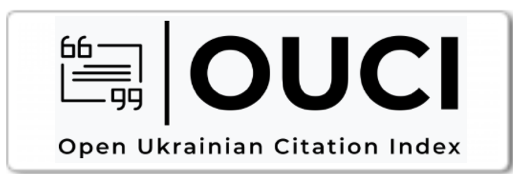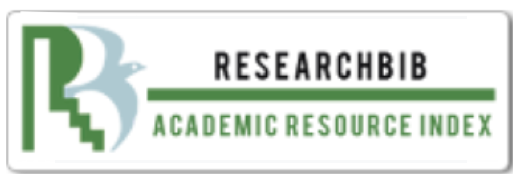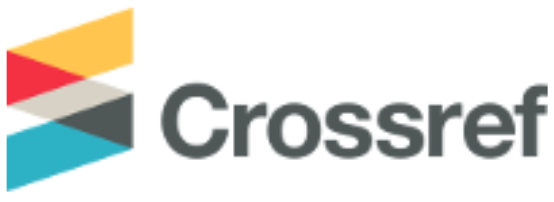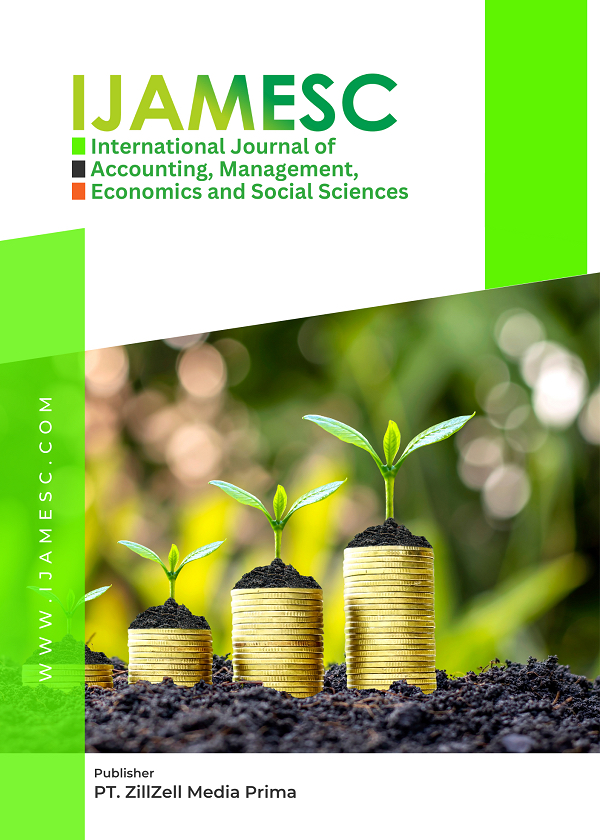SHORT-TERM DEBT, PROFITABILITY AND STOCK MARKET VOLATILITY AT THE NAIROBI SECURITIES EXCHANGE, KENYA
Main Article Content
Vivyanne Omira
Isaac Linus Ochieng
Gordon Opuodho
This study examines the relationship between short-term debt and stock market volatility among firms listed on the Nairobi Securities Exchange (NSE) in Kenya. Acknowledging the increased sensitivity of emerging markets to external financial shocks, the research aims to clarify how short-term financing affects market dynamics. Using secondary data from the NSE and company financial reports covering the period from 2013 to 2022, the study employs a quantitative approach that incorporates multiple linear regression, Pearson correlation analysis, and panel random effects models to capture both cross-sectional and time-series variations. The findings reveal a cyclical pattern in short-term borrowing and a strong positive relationship between short-term debt and market volatility. Regression analysis, which considers firm size and profitability, further confirms that short-term debt has a statistically significant positive impact on volatility. This suggests that short-term financing contributes to market instability when firm-specific factors are taken into account. The persistent presence of short-term debt in corporate capital structures underscores its strategic importance. These results highlight the need for investors and policymakers to carefully monitor corporate debt profiles to mitigate volatility risks in emerging financial markets.
Aghajan, Z., & Ohadi, F. (2016). The effect of financial structure on stock price volatility in firms listed at Tehran Stock Exchange. Journal of Accounting and Social Interests, 6(2), 1–16.
Ahmed, Z., & Hla, D. T. (2019). Stock return volatility and capital structure measures of nonfinancial firms in a dynamic panel model: Evidence from Pakistan. International Journal of Finance & Economics, 24(1), 604–628.
Al‐Najjar, B., & Hussainey, K. (2011). Revisiting the capital‐structure puzzle: UK evidence. The Journal of Risk Finance, 12(4), 329–338.
Capital Market Authority. (2020). Capital Market Authority statistical bulletin.
Capital Market Authority. (2022). Capital Market Authority statistical bulletin.
Chen, H., Wang, H., & Zhou, H. (2014). Stock return volatility and capital structure decisions (PBCSF–NIFR Research Paper No. 13-04). SSRN. https://doi.org/10.2139/ssrn.2346642
Chitiavi, M. S., Musiega, M. G., Alala, O. B., Douglas, M., & Christopher, M. O. (2013). Capital structure and corporate governance practices: Evidence from listed non-financial firms on Nairobi Securities Exchange, Kenya. IOSR Journal of Business and Management, 10(2), 8–16. https://doi.org/10.9790/487X-1020816
Dawar, V. (2014). Agency theory, capital structure and firm performance: Some Indian evidence. Managerial Finance, 40(12), 1190–1206.
Dhingra, B., Batra, S., Aggarwal, V., Yadav, M., & Kumar, P. (2024). Stock market volatility: A systematic review. Journal of Modelling in Management, 19(3), 925–952.
El Alaoui, A., Bacha, O. I., Masiha, M., & Asutay, M. (2017). Leverage versus volatility: Evidence from the capital structure of European firms. Economic Modelling, 62, 145–160.
Feidakis, A., & Rovolis, A. (2007). Capital structure choice in European Union: Evidence from the construction industry. Applied Financial Economics, 17(12), 989–1002.
George, T. J., & Hwang, C. Y. (2010). A resolution of the distress risk and leverage puzzles in the cross section of stock returns. Journal of Financial Economics, 96(1), 56–79.
Grigore, M. Z., & Stefan-Duicu, V. M. (2013). Agency theory and optimal capital structure. CKS Journal, Bucharest, 862–868.
Harrison, N. M., Muathe, S. M. A., & Kamau, A. W. (2021). Effect of financial structure on financial performance of listed commercial banks in Kenya. The Strategic Journal of Business & Change Management, 8(1), 140–154.
Jensen, M. C., & Meckling, W. H. (2019). Theory of the firm: Managerial behavior, agency costs and ownership structure. In Corporate governance (pp. 77–132). Gower.
Karimi, G. (2020). Effect of financial leverage on the trend of stock pricing fluctuations in companies listed in Tehran Stock Exchange. Propósitos y Representaciones, 8(2), 61.
Krishnappa, M. (2016). Factors that influence stock market volatility: A case study from Malaysia. International Journal of Research and Analytical Reviews, 3(1).
Leary, M. T., & Roberts, M. R. (2005). Do firms rebalance their capital structures? The Journal of Finance, 60(6), 2575–2619.
Levine, O., & Wu, Y. (2016). Asset volatility and financial policy: Evidence from corporate mergers. SSRN. https://ssrn.com/abstract=2399154
Luigi, P., & Sorin, V. (2009). A review of the capital structure theories. Annals of Faculty of Economics, 3(1), 315–320.
Mahato, J. K. (2024). Impact of capital structure on stock return. Medha: A Multidisciplinary Journal, 6(2), 53–60.
Maina, L., & Ishmail, M. (2014). Capital structure and financial performance in Kenya: Evidence from firms listed at the Nairobi Securities Exchange. International Journal of Social Sciences and Entrepreneurship, 1(11), 209–223.
Mwambuli, E. L., & Kimani, V. (2024). Towards share price volatility: Does capital structure choice really matter? Lapai Journal of Economics, 8(1), 140–152.
Nam, J., Ottoo, R. E., & Thornton, J. H. Jr. (2003). The effect of managerial incentives to bear risk on corporate capital structure and R&D investment. Financial Review, 38(1), 77–101.
Ndwiga, D., & Muriu, P. W. (2016). Stock returns and volatility in an emerging equity market: Evidence from Kenya. European Scientific Journal, 12(4), 79–98.
Nijenhuis, K. (2013). Important factors in determining the capital structure of a company: Empirical evidence from Dutch companies [Master’s thesis, University of Twente]. University of Twente Repository.
Nyamawi, M. G., Musiega, D., & Jagongo, A. (2017). Capital structure and firm performance of listed companies at the Nairobi Securities Exchange. International Journal of Economics and Finance, 9(1), 130–139.
Ochenge, R., Ngugi, R., & Muriu, P. (2020). Foreign equity flows and stock market liquidity in Kenya. Cogent Economics & Finance, 8(1), 1781503. https://doi.org/10.1080/23322039.2020.1781503
Otaify, M. (2015). Importance and causes of stock market volatility: Literature review. SSRN. https://ssrn.com/abstract=4126655
Owidi, O. H., & Mugo-Waweru, F. (2016). Analysis of asymmetric and persistence in stock return volatility in the Nairobi Securities Exchange market phases. Journal of Finance and Economics, 4(3), 63–73.
Oyunga, E. O. (2022). Effects of cashflow on stock market prices of companies listed in the Nairobi Securities Exchange [Doctoral dissertation, University of Nairobi].
Rajagopal, S. (2011). The portability of capital structure theory: Do traditional models fit in an emerging economy? Journal of Finance and Accountancy, 5, 1–17.
Ross, S. A., Westerfield, R. W., & Jaffe, J. F. (2019). Corporate finance (12th ed.). McGraw-Hill Education.
Segrestin, B., & Hatchuel, A. (2011). Beyond agency theory: A post‐crisis view of corporate law. British Journal of Management, 22(3), 484–499.
Shikumo, N. N., Muturi, W. M., & Ondiek, F. O. (2023). Effect of capital structure on financial performance of listed non-financial firms in Kenya. International Journal of Economics and Finance, 15(1), 1–12.
Smith, L. V., & Yamagata, T. (2011). Firm-level return–volatility analysis using dynamic panels. Journal of Empirical Finance, 18(5), 847–867.
Tongkong, S. (2012). Key factors influencing capital structure decision and its speed of adjustment of Thai listed real estate companies. Procedia - Social and Behavioral Sciences, 40, 716–720.
Vuong, T. H. G., Wu, Y. C., Weng, T. C., Nguyen, H. M., & Vo, X. V. (2023). Capital structure choices and stock market volatility: Evidence from Chinese listed firms. The Chinese Economy, 56(1), 25–49.
Yang, C. C., Lee, C. F., Gu, Y. X., & Lee, Y. W. (2010). Co-determination of capital structure and stock returns: A LISREL approach - An empirical test of Taiwan stock markets. Quarterly Review of Economics and Finance, 50(2), 222–233.
Yeh, C. C., & Lin, P. C. (2013). Financial structure on growth and volatility. Economic Modelling, 35, 391–400.
Zeitun, R., & Tian, G. G. (2007). Capital structure and corporate performance: Evidence from Jordan. Corporate Ownership & Control, 4(4), 110–117.
Zhang, Z. (2009). Debt maturity and the agency costs of free cash flow. Journal of Corporate Finance, 15(5), 653–670.






































